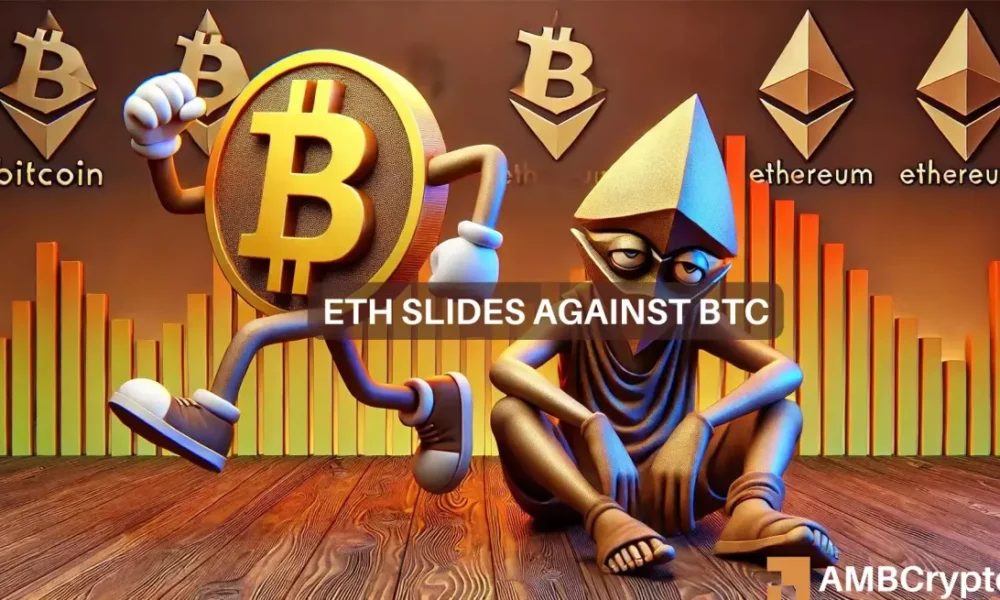At the forefront of the cryptocurrency market stand Bitcoin (BTC) and Ethereum (ETH) as the most substantial assets in terms of market capitalization. Despite both assets experiencing notable price fluctuations, ETH has found itself lagging behind BTC over the past couple of years.
While recent developments such as the approval of Spot Exchange Traded Funds (ETFs) for both BTC and ETH have emerged, they have not been adequate to reverse the relative underperformance of the altcoin.
The Decline of Ethereum in Comparison to Bitcoin
Recent data from CryptoQuant has revealed that Ethereum has fallen short of Bitcoin by 44% in the last two years. This decline for ETH in relation to BTC commenced post The Merge, during which Ethereum underwent a transition from a Proof of Work (PoW) to a Proof of Stake (PoS) consensus mechanism.
Subsequently, Ethereum has struggled to maintain pace with Bitcoin’s performance.
Currently, the ETH/BTC price sits at 0.0425, marking its lowest point since April 2021.
Despite the optimistic news of Spot ETF approvals for both assets in 2024 – with Ethereum’s ETF approval occurring in July – this endorsement has had minimal impact on reversing ETH’s lackluster performance against BTC.
Factors Contributing to the Ethereum/Bitcoin Discrepancy
There have been noticeable differences in network fees and transaction activities between Ethereum and Bitcoin in recent months.
Following Ethereum’s Dencun upgrade, data indicates a decrease in Ethereum’s fees, resulting in reduced network activity. Furthermore, Ethereum’s transaction count has significantly dropped from its peak of 27 transactions per second in June 2021 to only 11, marking one of its lowest levels since July 2020.
In contrast, Bitcoin has witnessed a surge in both fees and transactions in the recent period, primarily driven by the introduction of Inscriptions and Runes related to Bitcoin Ordinals. These implementations have heightened the demand for block space, elevating transaction costs on the Bitcoin network.
The decline in Ethereum fees has impacted its burn rate tied to the EIP-1559 mechanism. With lower fees, there is less ETH being burned, diminishing the deflationary pressure on the network, thus making Ethereum comparatively more inflationary.
This shift in dynamics differs from past scenarios where high network fees led to a higher burn rate, consequently reducing the overall ETH supply.
Examining the ETH/BTC Two-Year MVRV Analysis
Finally, an assessment of the two-year Market Value to Realized Value (MVRV) ratio for Ethereum and Bitcoin emphasizes the widening gap between the two assets.
Presently, Ethereum’s MVRV registers slightly below zero at -1.16%, while Bitcoin’s MVRV stands notably higher at over 14%.
This contrast in MVRV ratios vividly showcases ETH’s inferior performance relative to BTC.
The MVRV ratio evaluates holders’ profits or losses based on the variance between the current market value and the realized value of an asset. As per this analysis, BTC holders are enjoying profits exceeding 14%, while ETH holders are facing losses exceeding 1%.

